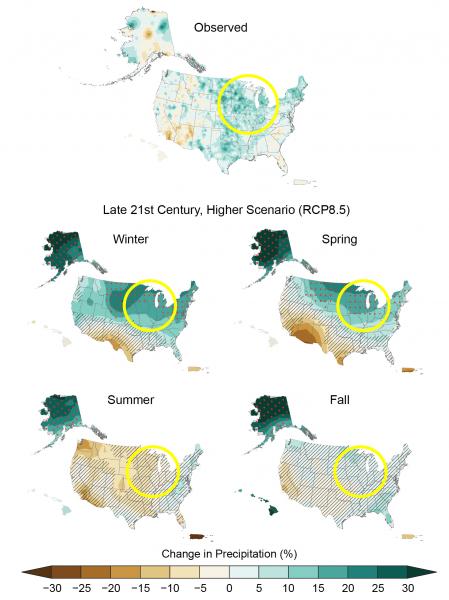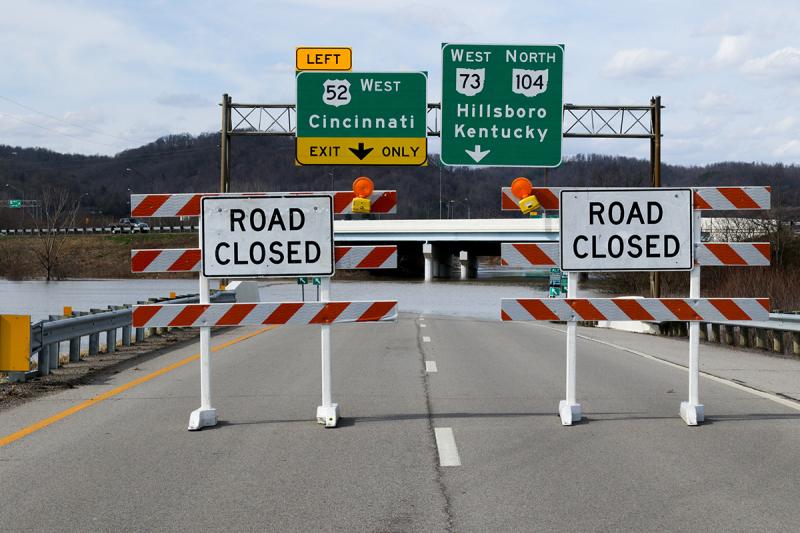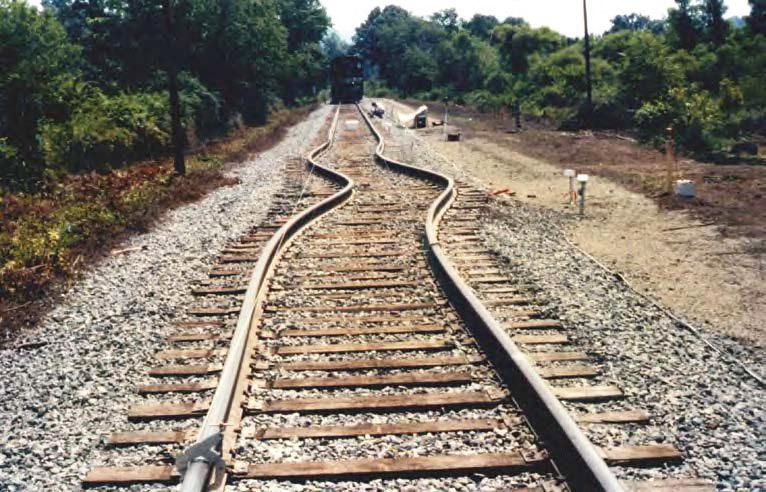Transportation and Infrastructure
Climate change poses challenges to transportation and stormwater systems in the Midwest. Annual precipitation in the region has increased by 5 percent to 15 percent from the first half of the last century; winter and spring precipitation contribute to regional flood risk and are projected to increase by up to 30 percent by the end of this century. Heavy precipitation events in the Midwest have increased in frequency and intensity since 1901 and are projected to continue to increase through this century.
Extreme precipitation events can overwhelm stormwater sewage systems, disrupt transportation networks, and cause damage to infrastructure and property. In metropolitan areas with older sewer systems that combine sanitary sewage with stormwater, extreme rain can result in the release of raw sewage into rivers and streams, posing both health and ecological risks. These releases pose challenges to major sources of drinking water, including the Mississippi River and the Great Lakes. The U.S. Environmental Protection Agency (EPA) estimates that the cost of adapting urban stormwater systems to handle more intense and frequent storms in the Midwest could exceed $480 million per year (in 2015 dollars) by the end of the century.
Extreme precipitation events affect transportation systems, as heavy rainstorms can result in the temporary closure of roadways. In addition, faster streamflow caused by extreme precipitation can erode the bases of bridges, a condition known as scour. The EPA estimates that the annual cost of maintaining current levels of service on bridges in the face of increased scour damage could reach approximately $400 million in the year 2050. Heavy precipitation also affects the operation of roadways by reducing safety and capacity while increasing travel times. Projected increases in the number of extreme precipitation events are linked to an increased risk of traffic accidents.
The country’s two largest rivers, the Mississippi and the Missouri, flow through the Midwest. Riverine flooding can cause loss of life, as well as significant property damage. River floods have caused the closure of interstate highways in the Midwest and temporary inundation of secondary roads. High water also disrupts barge traffic on the Mississippi River. Average annual damages from heightened flooding risk in the Midwest are projected to be more than $500 million (in 2015 dollars) by 2050.
In addition, when drought conditions exist along major river corridors like the Mississippi River, the impacts are global, affecting livestock production and food prices worldwide. The 2012 drought in the central U.S. closed the Mississippi River at least three times that summer, costing an estimated $300 million per day that the river was closed to traffic.1
Extreme heat creates material stress on road pavements, bridge expansion joints, and railroad tracks. Milder winter temperatures, however, may partially offset these damages by reducing the amount of rutting caused by the freeze-thaw cycle. Even taking milder winters into account, the EPA estimates that higher temperatures associated with unmitigated climate change could result in approximately $6 billion annually in added road maintenance costs and over $1 billion in impacts to rail transportation by 2090 (in 2015 dollars).
Adaptation
Green infrastructure—the use of plants and open space to manage stormwater—helps Midwestern communities become more resilient to impacts from heavy precipitation. Rain gardens and other planted landscape elements collect and filter rainwater in the soil, slowing runoff into sewer systems. Permeable pavements on parking lots allow the soil to store water. Planted trees next to roadways and preservation of wetlands provide important stormwater management benefits. Some types of green infrastructure, including urban trees and green roofs, contribute to climate change mitigation by acting as carbon sinks.
Road access is a critical concern during a crisis, particularly transportation to and from critical facilities such as hospitals. One adaptation strategy is to assure that multiple routes to and from such facilities are identified.
The preceding text is excerpted and abridged from the report Impacts, Risks, and Adaptation in the United States: Fourth National Climate Assessment, Volume II (Chapter 21, Midwest).
To learn more about climate impacts on transportation and infrastructure, visit the Transportation and Built Environment topics.
- 1Mississippi River Cities and Towns Initiative




